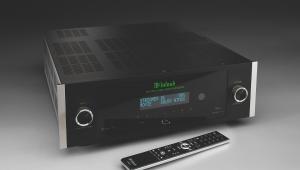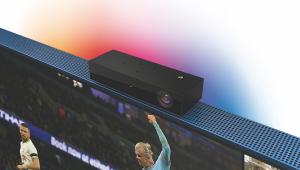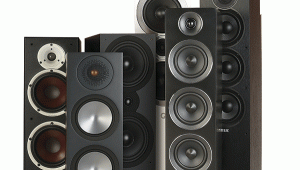AV Avenger: Firmware updates aren't always a good thing

Generally speaking, our modern connected world is a good thing, particularly when it comes to electronic doodads. Back in the day, before the 'net, we would buy a gadget, happy to know that what it did when first unboxed would be what it would do forever (wear and tear not withstanding) – play DVDs, amplify music, time an egg.
But things have changed. We now expect gear to evolve. In the age of the firmware upgrade, we take it for granted that new functionality can be poured into our durables. Want your AVR ready for tomorrow’s high-tech codec? Don’t worry, it’s going to get a firmware upgrade, say the makers. Your new TV not HDR-capable? Pfft, it’ll be upgraded before you know it. Firmware upgrades have become a universal panacea, patching, freshening and enhancing as required. Sure, they can be intrusive (Android TV launched with so many upgrades, actually trying to watch the telly became something of a challenge), but the practice has become transformative.
But what happens when firmware updates remove, rather than add, stuff? When those features you took for granted are switched off, removed or crippled? It’s happening right now, and it’s not pretty.
Gone but not forgottenPity poor Philips Blu-ray/home theatre system owners who recently turned on their kit only to find that the smart feature set had gone AWOL. Without any notice, brand owner Gibson Innovations snuck into living rooms and torched the functionality. The move, which happened January 29, hobbled a variety of devices sold between 2010 and 2014. Users were confronted with a message (‘To complete Smart TV sign-in, please switch your TV set off and on again’) or a blank screen when they hit the ‘Net TV’ button. It's hard to imagine the service reappearing.
Samsung has similarly been pulling the rug from under connected TV functionality. If you bought a Smart Hub TV circa 2011, you’ll already have spotted the signs of remote lobotomy. It first killed its integrated video store and music services; like Blockbuster, they became history. Then it turned off its On TV home page, a real slap in the face for users. This was the launcher for its Smart Hub service. It offered thumbnails of a swathe of popular channels, while a PIP window carried live TV – for a while it looked like the future of TV guides. But now this PIP window is all you get. The rest of the Smart Hub home screen is just a row of empty boxes. Thankfully apps still work, but for a smart TV it looks pretty stupid.
So while your LED panel will most likely live a long and fruitful life, it seems smart functionality is just a passing whimsy. Samsung lost interest in its first born when Tizen came along – despite selling shed loads of Smart Hub screens.
And just weeks ago, in what seems a surprising volte-face given its early evangelical zeal, it’s even canned its Explore 3D content service. Such feature-felling makes the sporadic pre-programmed attempts of my trusty old Pioneer plasma to find a firmware update seem particularly pathetic.
Firmware degrading and service termination has become the modern equivalent of backing the wrong video tape format or opting for a games console that never gets the support it craves. I dare say other early smart devices have similarly been knobbled, but their owners are probably too embarrassed to talk about them. No one wants to admit that their once cutting-edge toy has gone the way of MySpace and Bebo. The future, it seems, is far from proofed.
This article first appeared in HCC 258, March 2016.
 |
Home Cinema Choice #351 is on sale now, featuring: Samsung S95D flagship OLED TV; Ascendo loudspeakers; Pioneer VSA-LX805 AV receiver; UST projector roundup; 2024’s summer movies; Conan 4K; and more
|






















































